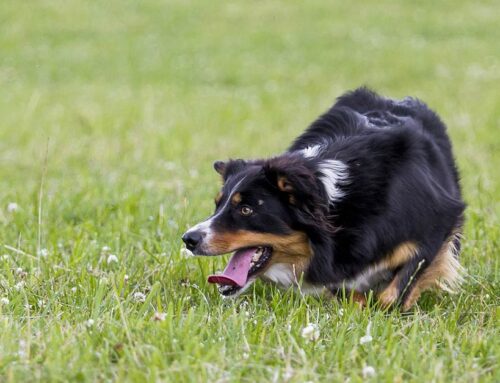 When we are living with any dog, but especially a fearful dog, we need to be prepared, at any moment, to reinforce behaviors we like. This is what behavior modification is all about.
When we are living with any dog, but especially a fearful dog, we need to be prepared, at any moment, to reinforce behaviors we like. This is what behavior modification is all about.
If you sat two children down, one with a pile of marbles, the other with a bucket of tennis balls and gave each the task to put these objects into a milk jug, what do you think is likely to happen? Start off with- which child is more likely to be successful? Assuming that the marbles are all small enough to fit into the jug and the child has the dexterity and hand/eye coordination, the child with the marbles will be. What about the child with the tennis balls? Even if they have the ability to try to perform the task, how many attempts do you think they will make before they give up altogether when they discover that tennis balls don’t fit into milk jugs? I’m going to guess, not many. Why bother?
If we were to bring in another child and give them a variety of different sized marbles, some which will fit, some just barely, others not at all, how many attempts do you think they will make before they stop? Let’s assume that putting marbles in jugs is fun for the child or that we’ve promised them their special treat for doing it, and I’m guessing that they will keep trying until they have put all the marbles that fit into the jug and have a pile of those that don’t. If we asked them to do this a second time they might even do it more quickly if there were easy ways for them to differentiate between the sizes of the marbles; all the red ones fit, blue ones don’t.
When our dogs are interacting with us and their environment there is a continuous flow of experimentation of behavior. Each behavior provides the dog with information as to whether they should do it again or not based on what outcome the behavior produces. Does the behavior fit? If we always provide our dogs with information that tells them that a behavior is the right one, they can be prepared to use that behavior again in the future. If we resort to punishment too often, which for a fearful dog may be just once, they may, like the child with the tennis balls, stop bothering to experiment to come up with the behavior that fits.
We don’t need to hit them over the head to let them know that a behavior isn’t fitting. If they have learned a variety of ways that tell them that a behavior does fit; food treats, praise, smiles, cheers of approval, a click, the word YES, when one of these does not occur, they are prepared to experiment with another response until they are successful.
In life, on rivers, or when training a dog, there are advantages to going with the flow.





